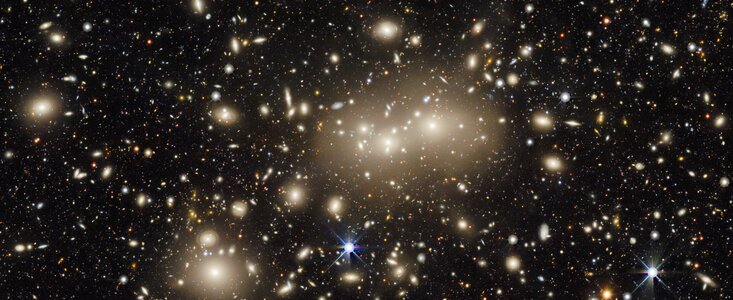Universe teeming with galaxies in new two-dimensional map of the sky

The Universe is teeming with galaxies, each brimming with billions of stars, in a new two-dimensional map of the sky. The tenth data release from the Dark Energy Spectroscopic Instrument (DESI) Legacy Imaging Surveys has added the increased sky and wavelength coverage to the already completed companion surveys.
DESI Legacy Imaging Surveys, a six-year survey covering nearly half the sky, expands on the data from the Dark Energy Camera (DECam) Legacy Survey and the Beijing-Arizona Sky Survey. Together, these threes surveys captured 14,000 square degrees of the sky visible from the northern hemisphere using telescopes at NSF's NOIRLab's Kitt Peak National Observatory (KPNO) and Cerro Tololo Inter-American Observatory (CTIO) in Chile.
DESI Legacy Imaging Surveys' tenth data release focuses on incorporating fresh DECam imaging of the southern extragalactic sky, particularly in regions beyond the Milky Way's disk that offer excellent opportunities to explore the depths of the universe. With the addition of southern sky pictures, the Legacy Surveys have been expanded to more than 20,000 square degrees, which represents nearly 50% of the sky.
"The addition of near-infrared wavelength data to the Legacy Survey will allow us to better calculate the redshifts of distant galaxies, or the amount of time it took light from those galaxies to reach Earth," said Alfredo Zenteno, an astronomer with NSF's NOIRLab.
The constantly expanding collection of astronomical data from Legacy Surveys benefits not only scientists but also the general public. The open-access data provides an opportunity for astronomy enthusiasts and inquisitive individuals to virtually explore the vast universe that surrounds us.
"In my opinion, it is this ease of access which has made this survey so impactful. We hope that in a few years, the Legacy Surveys will have the most complete map of the entire sky, and provide a treasure trove for scientists well into the future," says Arjun Dey, an astronomer with NSF’s NOIRLab.










